Yeongyang Center (영양센타)
13.8Km 2021-03-29
52, Myeongdong 2-gil, Jung-gu, Seoul
+82-2-776-2015
This is a restaurant in Myeong-dong where you can eat old-fashioned whole chicken. This Korean dishes restaurant is located in Jung-gu, Seoul. The most famous menu is fried chicken.
Palacio Changgyeonggung (창경궁)
13.8Km 2025-05-13
Changgyeonggung-ro 185, Jongno-gu, Seúl.
El palacio Changgyeonggung de Seúl es uno de los palacios más especiales del período de la dinastía Joseon. El origen de este palacio proviene de la asunción del rey Sejong (1397-1450) en 1418. Una vez que fue coronado, mandó construir el palacio Suganggung para brindarle mayores comodidades al monarca anterior, Taejong (1367-1422), que había abdicado en su favor. El palacio Changgyeonggung fue degradado a Changgyeongwon, sede de jardín zoológico y botánico durante el período de la ocupación japonesa de Corea (1910-1945). En 1983, el zoológico fue trasladado y el palacio fue completamente restaurado volviendo a ser llamado Chaggyeonggung.
Pasando por la entrada principal al palacio, la puerta Honghwamun, se ve el puente Okcheongyo. Todos los palacios de la dinastía Joseon tienen estanques con un puente encima con forma de arco, tal como el puente Okcheongyo. Cruzando Okcheongyo, se pasa por la puerta Myeongjeongmun, y entonces, se halla el pabellón Myeongjeongjeon, que era la oficina del Rey. Además, Myeongjeongjeon es el pabellón más antiguo de su tipo de todos los palacios del período de Joseon. Normalmente, las construcciones de esta época se elevan mirando hacia el sur, pero Myeongjeongjeon mira hacia el este. Esto se debió a que los mausoleos de los anteriores monarcas se encontraban al sur y según las costumbres confucianas, no se permitían tener aperturas hacia la misma dirección. A uno y otro lado del patio se encuentran alineadas las piedras con los grabados que indicaban la jerarquía de los funcionarios oficiales.
Detrás de Myeongjeongjeon, hacia la izquierda y sobre un terreno más elevado se encuentra la sala Sungmundang. Esta sala fue construida aprovechando muy bien la pendiente de la geografía montañosa. Si se observa Myeongjeongjeon y Munjeongjeon, la combinación de las laderas montañosas y la línea de sus techos logran una armonía de gran belleza. Otro pabellón, Tongmyeongjeon, fue construido para la reina. Es la construcción más grande dentro del palacio Changgyeonggung, y en muchos lugares se notan detalles delicados de sus estructuras en atención a la reina. Andando por las rocas de Yanghwajeon después de pasar por Tongmyeongjeon, se llega a Jagyeongjeon. Y hacia el sudeste de Jagyeongjeon se encuentra Punggidae. Punggidae es un instrumento que servía para medir el viento. Se trata de una larga vara con un jirón de tela atada a una punta, y se la usaba para medir la velocidad y dirección del viento.
Dirigiéndose hacia el norte uno se encuentra con un enorme estanque denominado Chundangji. Originalmente, la mitad del estanque era utilizada por el mismo rey para cultivar arroz y aprender sobre agricultura. Pero durante la ocupación japonesa, transformaron el campo de arroz en estanque para hacer flotar pequeños botes sobre él. El jardín botánico creado en aquellos días sobre la parte superior del estanque permanece aún en la actualidad.
Puerta Honghwamun del Palacio Changgyeonggung (창경궁 홍화문)
13.8Km 2025-08-08
Changgyeonggung-ro 185, Jongno-gu, Seúl
Es la puerta instalada en el noreste de la muralla de Seúl, siendo una de las 4 principales. Fue construida en el mes de septiembre del 5º año del rey Taejo (1396), y en aquel momento fue denominada Honghwamun. Pero en el año 1483, al 14º año del reinado de Seongjong, se reconstruyó el palacio Changgyeonggung, pero su puerta oriental también se llamaba Honghwamun, por la que se le cambió el nombre a Hywahwamun en 1511. La puerta fue destruida cuando se abrió una calle para coches durante el período de la ocupación japonesa, en la primera mitad del siglo XX, pero en 1992 fue reconstruida y recuperó su nombre original.
Sisamdal (시샘달)
13.8Km 2021-03-18
2, Myeongdong 8-gil, Jung-gu, Seoul
+82-2-310-9116
This is a cafe located in Myeong-dong, Seoul. A store selling Korea’s representative summer dishes. The representative menu is shaved ice with red bean topping.
Myeongdong Yeongyang Center (명동 영양센터)
13.8Km 2020-01-09
52, Myeongdong 2-gil, Jung-gu, Seoul
+82-2-776-2015
Myeongdong Yeongyang Center is a 52 year-old specialty restaurant in Myeongdong. It specializes in samgyetang (ginseng chicken soup) and tongdak (roasted chicken). In 1960, Yeongyang Center has started to sell tongdak roasted on an electric rotisserie. Since then, the crisp and not-at-all greasy taste has attracted popularity among local Koreans and it has become a must-visit restaurant among foreign tourists.
They use chickens provided by directly owned chicken farm and the owner of the restaurant thoroughly manages all the process of cooking even from the ingredients preparation level.
Their main menus are samgyetang and tongdak. The Samgyetang features its tender meat and thick broth after boiling for 2 hours and the tongdak features crispy and not-fatty taste of the well-drained chicken. Among the menus, sansam Samgyetang stuffed with wild ginseng powder is the most be-loved menu.
Chanyangjip (찬양집)
13.8Km 2025-07-18
5, Donhwamun-ro 11da-gil, Jongno-gu, Seoul
Pajeongjip (파전집)
13.8Km 2021-04-13
27, Donhwamun-ro 11-gil, Jongno-gu, Seoul
+82-2-742-6763
A great store to visit on a rainy day. This Korean dishes restaurant is located in Jongno-gu, Seoul. The representative menu is assorted savory pancakes.
Wondang Gamjatang Myeongdong(원당감자탕 명동)
13.9Km 2020-11-03
13, Myeongdong, 9-gil, Jung-gu, Seoul
+82-2-776-7612
It is a place frequently visited by Koreans where you can eat delicious Korean soups. This Korean dishes restaurant is located in Jung-gu, Seoul. The representative menu is pork back-bone stew.
Hostel Tommy (Former Yellow Brick 2 Hostel) ((호스텔 토미(구 옐로우브릭2 호스텔))
13.9Km 2025-07-30
66, Donhwamun-ro, Jongno-gu, Seoul
Sagyejinmi - Myeongdong Branch (사계진미 명동)
13.9Km 2021-09-03
37, Myeongdong8na-gil, Jung-gu, Seoul
+82-2-3789-6939
This is a Korean cuisine located in Myeong-dong, Seoul. A restaurant where you can try Korean BBQ chicken. The representative menu is Spicy Stir-fried Chicken.
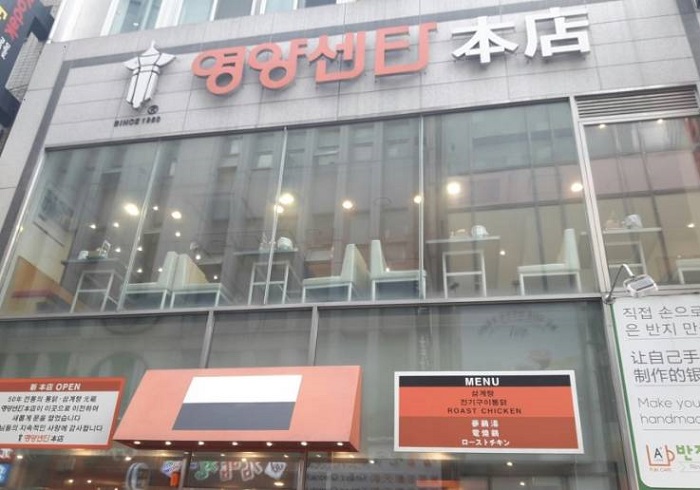
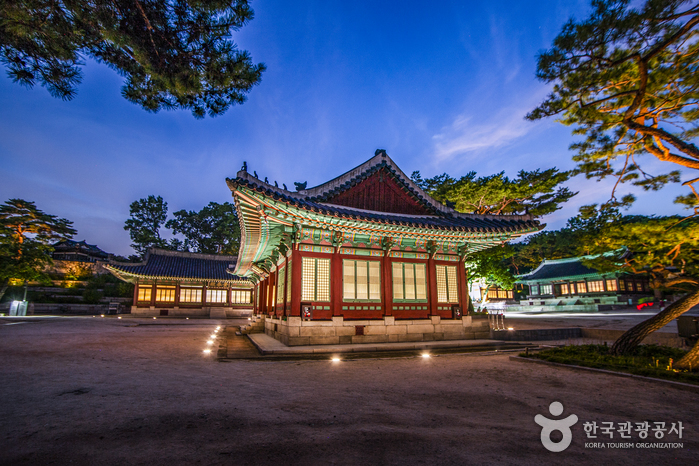
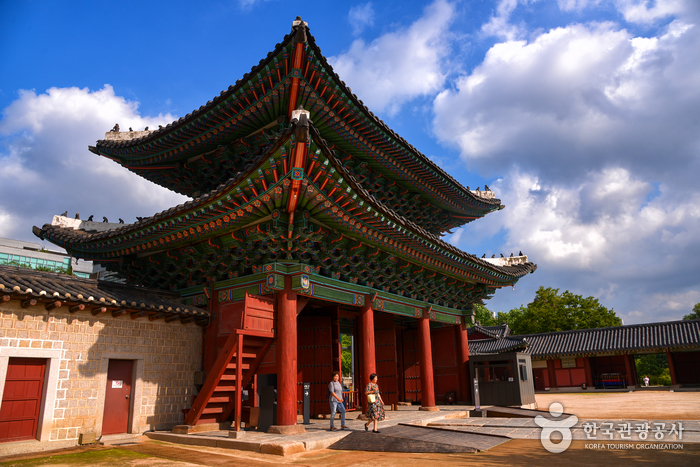
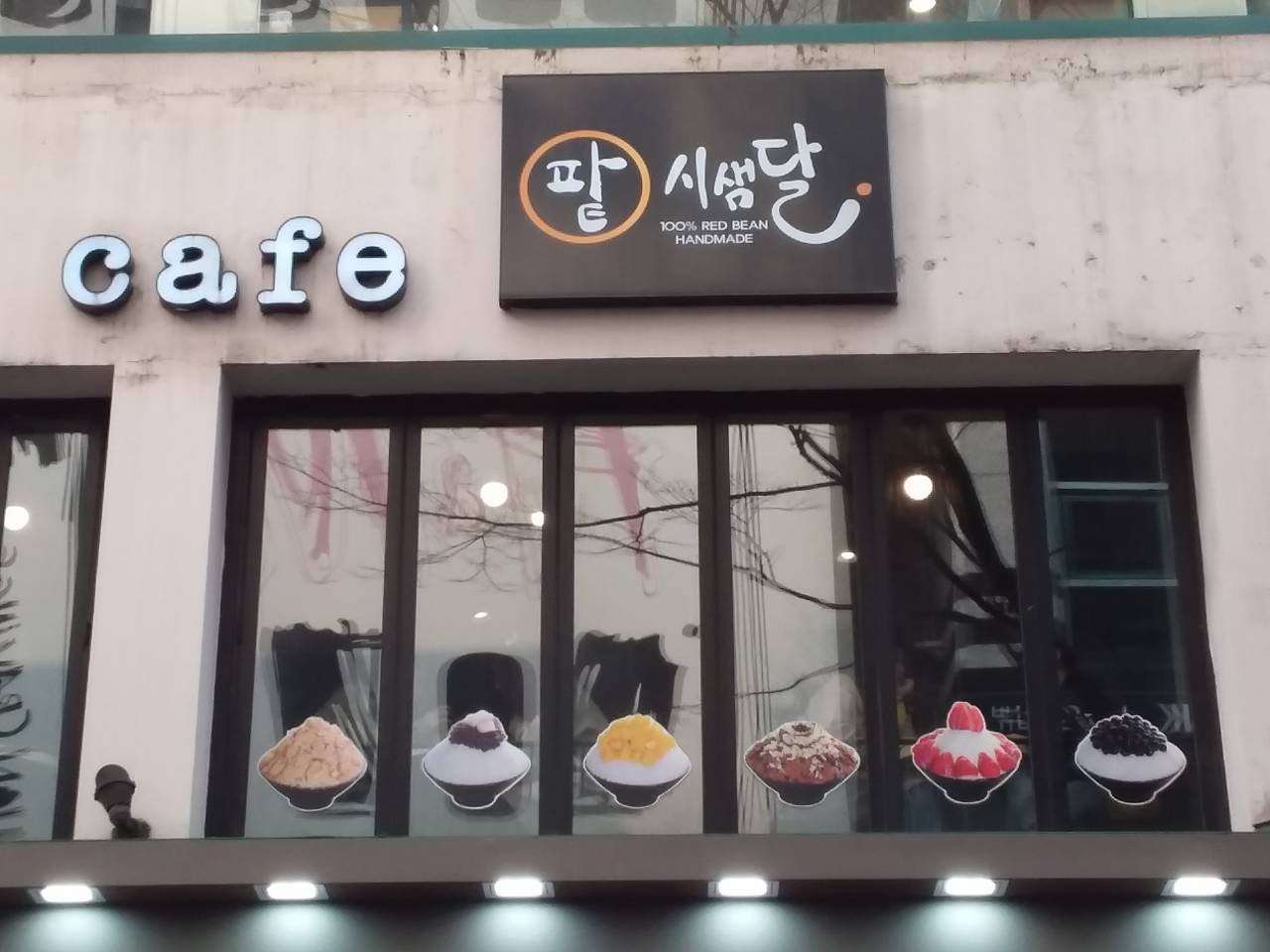
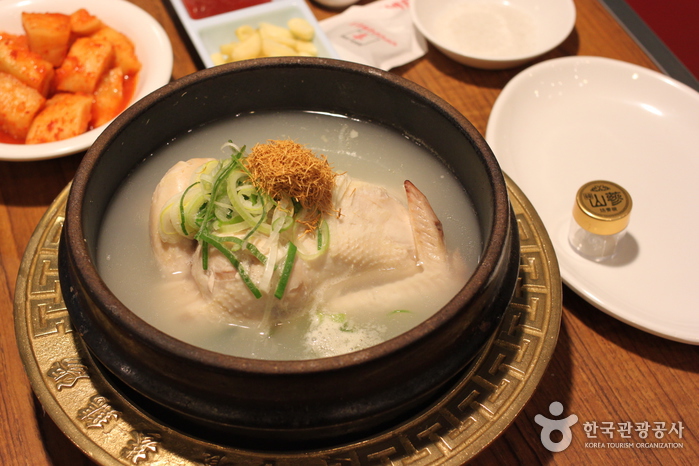
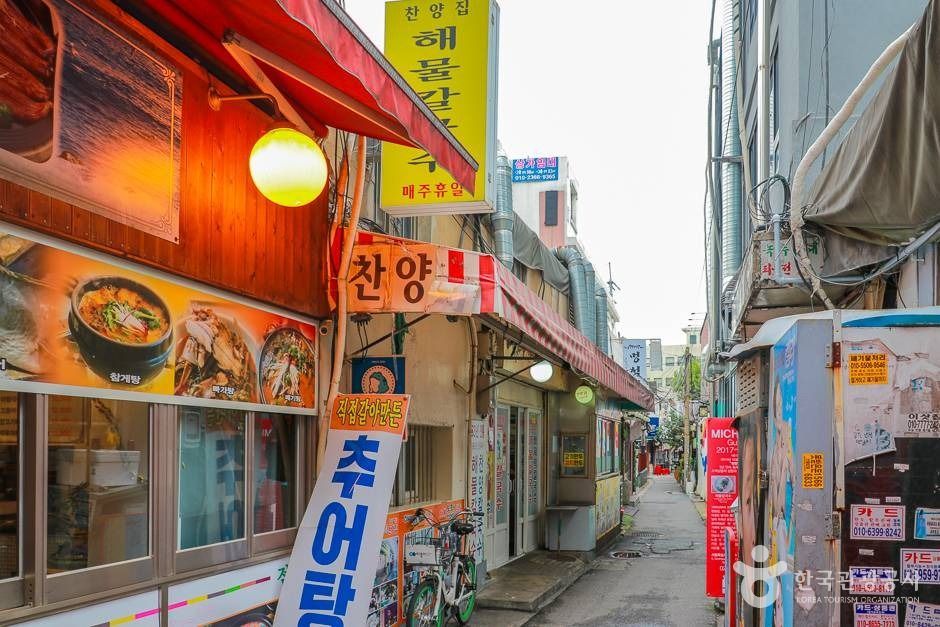
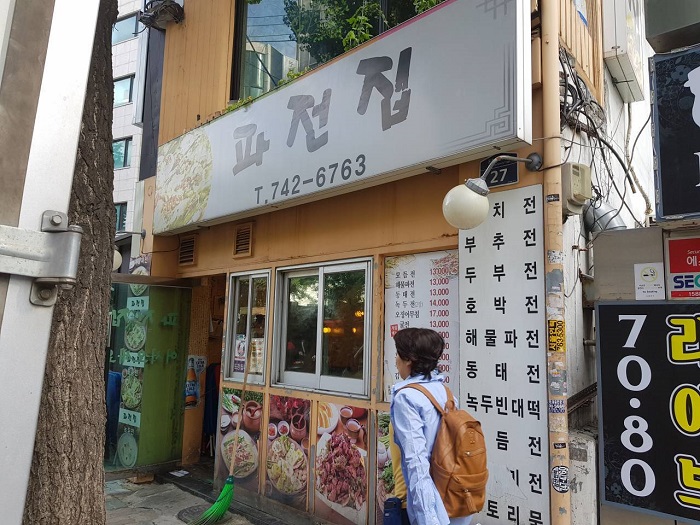
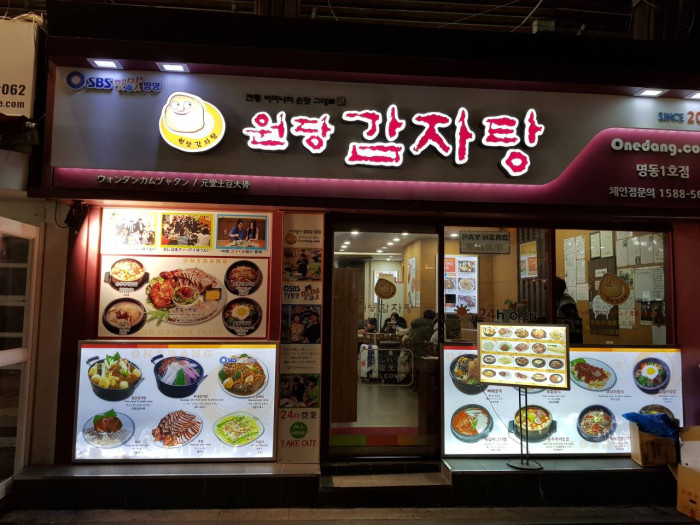

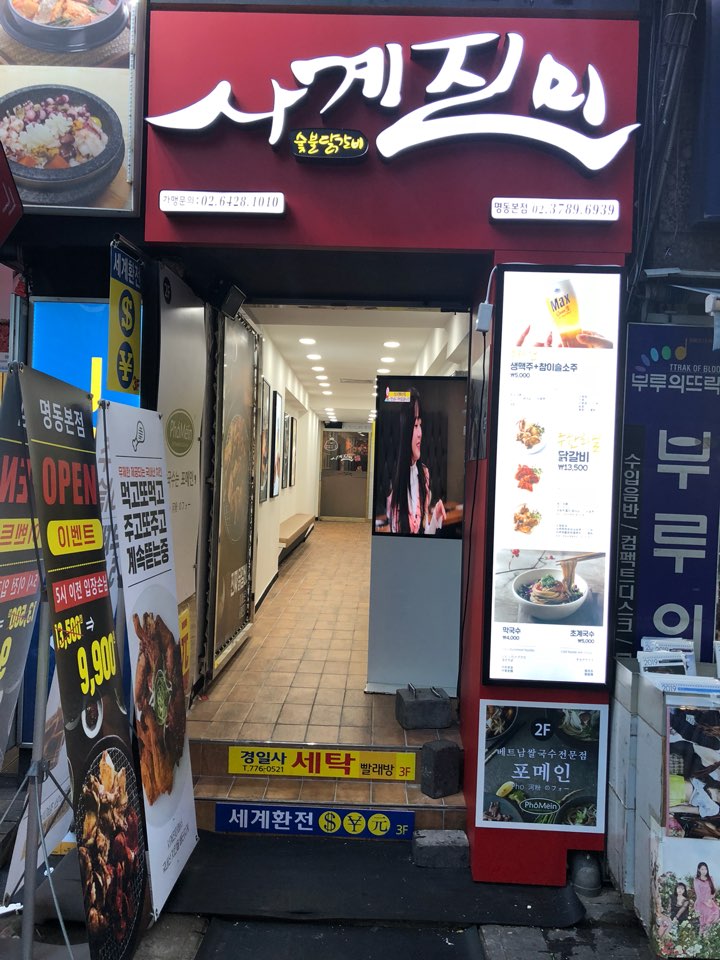
 Español
Español
 한국어
한국어 English
English 日本語
日本語 中文(简体)
中文(简体) Deutsch
Deutsch Français
Français Русский
Русский